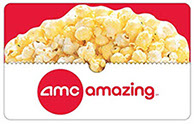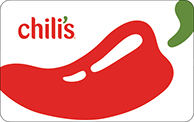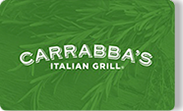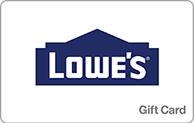Introduction to Prepaid Plans
Prepaid plans are shaking things up in how we handle transactions today, making waves in various sectors like telecommunications, finance, and even transit. Simply put, these plans let you pay upfront for services or goods you’ll use later. Unlike traditional postpaid services where you use first and pay later, prepaid flips the script. You’re in control, paying ahead and then using the service or product within the limits you’ve already paid for. This is a game-changer because it can help you manage your budget better, avoid debt, and even sidestep those pesky late fees. Plus, with the rise of digital technology, loading up your prepaid account has become a breeze, offering convenience and ease of use. Whether it’s your phone plan, your morning coffee, or your commute expenses, prepaid plans are redefining the way we think about paying and consuming services in a more disciplined and financially savvy way.
The Evolution of Prepaid Payment Systems
Prepaid payment systems have come a long way from simply being a method for controlling spending. Initially, they were basic cards loaded with a fixed amount of cash. But, hold on, they’ve transformed into something way more advanced. Now, these cards are power-packed with features that make managing finances a breeze. Think about it. You’ve got budgeting tools, rewards, and even the ability to lock and unlock your card through an app. Plus, the evolution doesn’t stop there. The growth of digital technology means prepaid cards are now part of a larger ecosystem. They’re compatible with digital wallets, easy online transactions, and even person-to-person transfers. So, what started as a simple tool to keep spending in check is now a gateway to sophisticated financial management. It’s like the evolution from a walkman to a smartphone in the payment world. Big leap, right?
How Prepaid Plans are Reshaping Consumer Spending
Prepaid plans are changing the game. Gone are the days of being shocked by monthly bills. Now, you know exactly how much you’re spending because you pay upfront. It’s simple: buy now, use it as you need. This shift means you can control your budget better, without the fear of overspending or hidden charges. Think of it like this – prepaid plans put you in the driver’s seat. Whether it’s for your mobile phone, internet, or streaming services, you decide how much you spend and when. Plus, there’s a bonus. Companies are noticing we love this control. So, they’re upping their game, offering better deals and services to keep us interested. In short, prepaid plans are not just about paying in advance; they’re about smart spending and getting value on your terms.
The Benefits of Using Prepaid Plans
Prepaid plans are a game changer. They give you control, help you budget better, and you don’t get tied down. Here’s the lowdown: You know what you’re spending. There are no surprises. You pay upfront, and that’s it. Budgeting is a breeze because you can only spend what’s on your card. It’s perfect for keeping your finances in check. No long-term commitments. Forget about contracts that lock you in for years. Prepaid plans are flexible. You can change them or drop them whenever. This freedom is a big plus. Also, building credit can be easier. Some prepaid options help you improve your credit score by reporting your payments. Lastly, these plans can save you money. Without overage charges or hidden fees, what you see is what you get. Simple and straight to the point.
Innovations in Prepaid Technology
Prepaid technology isn’t what it used to be. Gone are the days of one-size-fits-all prepaid cards. Today, innovations are shaking up how we think about and use these financial tools. Tap-to-pay features are now standard, blending seamlessly into our digital-first world. It means less time fumbling for cards and more time cruising through checkouts. Reload options have also leveled up. You can now add funds online, through apps, or even via text, making topping up as easy as sending a tweet. Plus, many prepaid cards are getting smarter, with built-in budgeting tools and real-time spending alerts. It’s like having a financial advisor in your pocket, nudging you towards better spending habits. And then there’s security – today’s prepaid cards come with robust protections against fraud and theft, giving peace of mind along with financial flexibility. In short, prepaid technology is changing the game, offering convenience, control, and peace of mind in a compact, versatile package.
Prepaid Plans vs. Traditional Banking: A Comparative Analysis
Prepaid plans are stepping into the ring, ready to challenge traditional banking. These are not your regular bank accounts. Think of them as pay-as-you-go phones but for your money. You load cash onto a card and boom, you’re ready to spend or save. It’s that simple. No need to worry about overdraft fees because you can only spend what you have. On the flip side, traditional banks come with a whole suite of services, like loans and interest on your savings. But, and it’s a big but, they often tag along fees and minimum balance requirements. So, what’s the deal? Prepaid plans offer simplicity and control, ideal for budget warriors or those tired of banking surprises. Traditional banking, though, has its perks if you’re eyeing loans or earning interest. It boils down to what you value: simplicity and control with prepaid, or the full-service package with traditional banks. Choose wisely.
The Impact of Prepaid Plans on Financial Inclusion
Prepaid plans aren’t just for your phone anymore. They’re becoming a big deal in how people handle their money, making financial services more reachable for everyone. Why? Because these plans don’t rely on having a fancy credit score or a traditional bank account. Let’s break it down. First up, prepaid plans are super straightforward. You load money onto a card or an account, and boom, you’re ready to go. This simplicity is a game-changer for folks who’ve been locked out of the banking world. No more hurdles like minimum balance fees or overdraft charges. This means more people can step into the financial mainstream without feeling overwhelmed. Next, think of the control it offers. With prepaid, what you see is what you get. You can only spend what you have, which is perfect for budgeting and avoiding debt. This control can be a real confidence booster for people not used to managing their money. Lastly, the reach of prepaid plans is massive. They’re everywhere – online, in stores, you name it. This accessibility means that no matter where you are, you can participate in the economy. No bank account? No problem. Prepaid has got you covered. In short, prepaid plans are knocking down barriers, making it easier for everyone to get in on the financial action. It’s not just about paying for things; it’s about paving the way for financial inclusion.
How Businesses are Adapting to Prepaid Plan Trends
Businesses are getting smart about keeping up with the prepaid plan wave. It’s not just about offering services anymore; it’s about how those services are paid for. Companies are realizing prepaid plans aren’t just a trend—they’re a shift in the payment landscape. So, they’re tailoring their offerings to match.
First off, businesses are beefing up their digital platforms. Everyone’s online these days, so it’s crucial for companies to have robust, user-friendly systems that can handle prepaid transactions smoothly. This means investing in technology and often, teaming up with fintech startups for that cutting-edge advantage.
Next, customization is key. Businesses know one size doesn’t fit all, especially with younger consumers who value personalization. So, they’re getting creative, offering prepaid plans that can be tweaked to fit different needs and preferences. This flexibility not only attracts customers but keeps them coming back.
Finally, transparency is a big deal. In the age of information, nobody likes hidden fees or surprise charges. Businesses are making their prepaid plans clear, concise, and upfront. This honesty builds trust and a stronger relationship with their customers.
In short, adapting to prepaid plan trends means going digital, offering personalized options, and being crystal clear about what customers are signing up for. Businesses that get this right are staying relevant and competitive in a fast-changing market.
Future Predictions: The Next Wave of Prepaid Plan Innovations
Prepaid plans are not just about paying upfront anymore. They’re transforming how we think about transactions, bringing in a new era of flexibility and control over finances. The future looks bright, with predictions pointing toward more personalized, tech-driven options. We might soon see plans that adjust automatically based on how much data or minutes you use, saving you money without lifting a finger. Imagine your plan getting cheaper the less you use your phone. Also, with the rise of cryptocurrencies and blockchain technology, don’t be surprised if soon you can top up your prepaid account with Bitcoin or Ethereum. This could mean faster, more secure transactions without the hassle of traditional banking systems. Plus, with AI and machine learning, companies could offer highly customized plans that fit your usage patterns like a glove, ensuring you always get the best deal. So, buckle up. Prepaid plans are about to get a whole lot smarter.
Conclusion: The Changing Landscape of Payments
The world of payments is evolving fast, and prepaid plans are at the forefront of this revolution. Gone are the days when cash and credit cards were the only ways to manage transactions. Today, prepaid plans offer flexibility, control, and accessibility like never before. From allowing users to budget more effectively to enabling payments without a bank account, these innovations are changing how we think about money. As we’ve seen, the integration of technology in prepaid solutions is not only making transactions safer and faster but also more inclusive, opening doors for people across different economic backgrounds. The shift towards digital payments, fueled by prepaid platforms, is reshaping the payment landscape, making it more adaptable, secure, and user-friendly. This evolution promises a future where financial transactions are no longer hurdles but facilitators of a smoother, more connected life.








